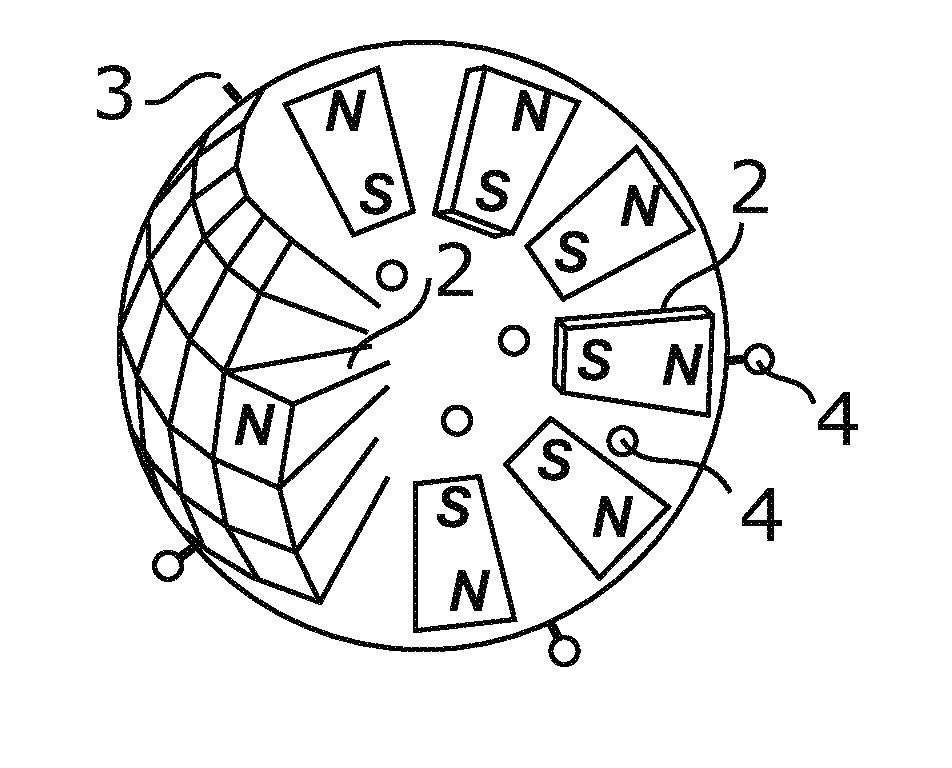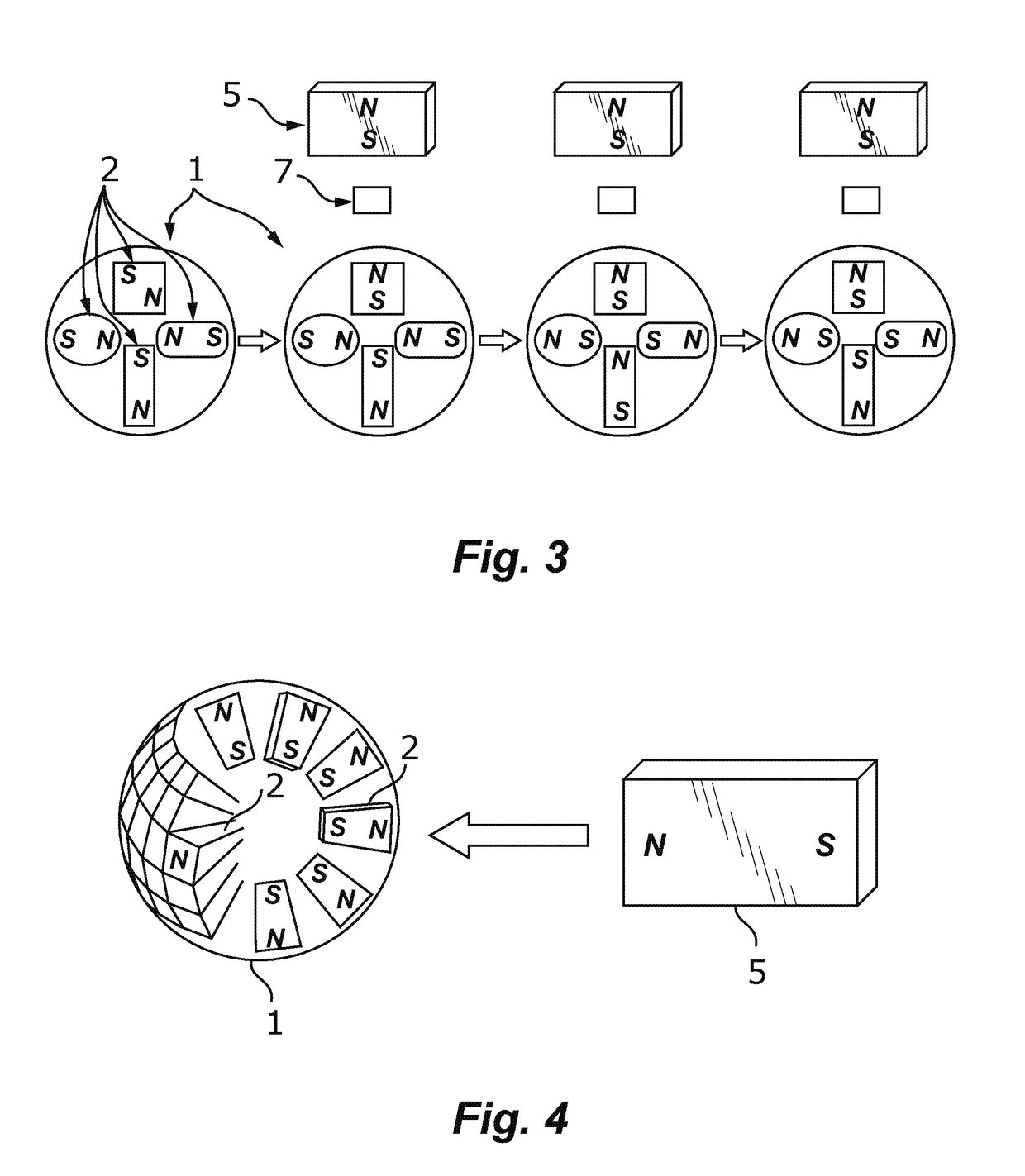3D Cancer Targeting with Magnetic Repulsion
a magnetic repulsion and cancer technology, applied in the field of preparation and use of micro and nano particles, can solve the problems of incompetent current magnetic targeting, collapse of ferx corporation, and inability to become very useful
- Summary
- Abstract
- Description
- Claims
- Application Information
AI Technical Summary
Benefits of technology
Problems solved by technology
Method used
Image
Examples
first embodiment
[0055 for preparing the UNIPOLAR MAGNETIC CARRIER: (1) put a membrane, such as polyethylene membrane, at one surface of a container. The membrane is added to the surface by increasing the temperature of a suspension that containing the plastic material to the melting temperature of the plastic. If the plastic is heavier then the suspension medium, it will go to the bottom surface of the container. If lighter, it will go to the cover or top surface of the container. Ultrasonic vibration may be necessary to help the membrane spread evenly on the surface. We will control the thickness of the membrane by controlling the quantity of the plastic material in the suspension. (2) add into the container another mediums that contains tiny magnets, (3) apply magnetic forces at the other side of the surface that has the membrane to attract the tiny magnets to or into the membrane, the magnetic force should be so strong to overcome the interactions among the tiny-magnets so that they will stand w...
second embodiment
[0060 for preparing the UNIPOLAR MAGNETIC CARRIER: to a colloid solution containing the tiny magnets, we add a layer of oil or organic solution, and then put a strong magnet to draw the tiny magnet into the layer. The layer is not so thick so that the other pole of the tiny magnets will stay in the solution. We may then modify that pole, such as we may add active groups that allow the tiny magnets to bind to a medicine-carrier with that specific pole, or bind together with that modified pole, and after they bind together we add melted polymers to submerge the tiny magnets and let the polymers to turn hard to fix them. The tiny magnets may be coated with magnetic shielding material all over. If the whole tiny magnets or tiny superconductors are coated with the shielded materials, for the purpose of avoiding them interact with each other during the preparation of the medicine-carriers, we may, when necessary, clean up the shielding materials from the poles that face the out surface on...
third embodiment
[0061 for preparing the UNIPOLAR MAGNETIC CARRIER: the particles or medicine-carriers are not original magnetic or they are demagnetized. They will be magnetized or re-magnetized into UNIPOLAR MAGNETIC CARRIER. Such as, after the particles are prepared, we put them into a container. Around the container, we put high magnetic forces or surfaces that with one same pole points to the container. We may then increase the temperature to a specific degree, let the particles get magnetized. The surrounding magnetic forces may be put in a specific way to make the particles unipolar. Then, we cool down the temperature to retain the magnetism permanently. The surrounding magnetic forces or surfaces may be applied to the container one after another, not at the same time.
[0062]The third embodiment may also include another way to make the UNIPOLAR MAGNETIC CARRIER. Once the non-magnetic particles are prepared, we add to them magnetic particles that are much smaller. The smaller particles have onl...
PUM
 Login to View More
Login to View More Abstract
Description
Claims
Application Information
 Login to View More
Login to View More - R&D
- Intellectual Property
- Life Sciences
- Materials
- Tech Scout
- Unparalleled Data Quality
- Higher Quality Content
- 60% Fewer Hallucinations
Browse by: Latest US Patents, China's latest patents, Technical Efficacy Thesaurus, Application Domain, Technology Topic, Popular Technical Reports.
© 2025 PatSnap. All rights reserved.Legal|Privacy policy|Modern Slavery Act Transparency Statement|Sitemap|About US| Contact US: help@patsnap.com



